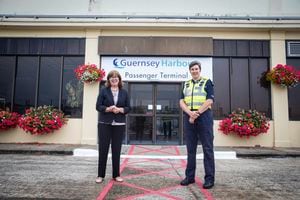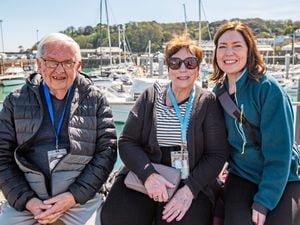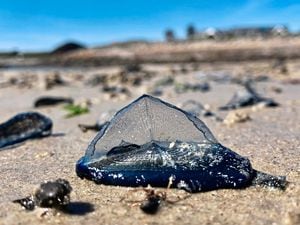Island ready to move to ‘slick new system’
IT COULD take eight or nine days for people arriving in Guernsey to emerge from self-isolation, even with a clear Covid-19 test, under new travel rules which come into force on Monday.

Travellers who have been to a Group B destination, including the whole of the UK and Jersey at the time of going to print, in the seven days prior to arrival, will be eligible for seven-day testing. However, results could take up to 48 hours to process.
Director of Public Health Dr Nicola Brink said the move forward into the so-called 5b phase of the island’s exit from lockdown was proportionate.
‘We’re really pleased and excited to be moving to 5b,’ she said.
‘It’s a restricted period of self-isolation down to seven days with the test on day seven and release if that test is negative, followed by a passive follow-up that is far less restrictive.
‘We’re always very cautious and want to think about the most vulnerable people in our society, so those in passive follow-up are told to ensure visits to care homes, if needed, are pre-arranged, the same with hospitals and health care facilities.
‘Everything we’ve done, we’ve considered the effect on our whole population.’
The new phase would see scheduling team members get in touch with travellers to arrange their test on day seven, usually within 26 hours of arrival, as suggested in last month’s pilot scheme.
‘We’re hoping it will be better than that when we do the substantive testing,’ she said.
‘During the pilot we had some problems with contact details, say if someone had a non-UK phone it took us a bit of time to work out the country of origin. So this time we want to make the process as slick as we can.’
From swab to result, the team hopes results take around 24 hours, making the self-isolation period around eight days, however, it could run into nine days if there are delays.
‘Our test time is four hours from swab to test result – that’s what matters to people,’ said Dr Brink.
‘But in self-isolation it could be eight days, worst case it could be nine, this is because we need to take into account the laboratory handling and getting it there, contacting people and so on, but we’re hoping that most people will be out on day eight.’
She said this process could be done more quickly later in the year.
‘The testing system that we’ve got will be due for our robotic extractor to be delivered towards the middle of November and that will help with processing,’ she said.
‘We’ll continue looking at other testing procedures, but the actual testing time is only one aspect of the whole process.
We can do it in a few hours and we’ve got a rapid test which we can do in an hour, which is saved for urgent samples.’
She added there was more of a chance for more phases in Phase 5 than there was of going directly into Phase 6.
‘We’ll look at an incremental and proportionate progress forwards,’ she said.
‘So really what we’ll look at is further releasing the self-isolation requirements.
‘It’s unlikely that we’ll have no testing until we have a vaccine available and what we’ll be doing is reducing the time in self-isolation and looking at testing to do that.
‘So there could be a 5c.’





